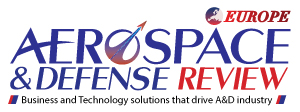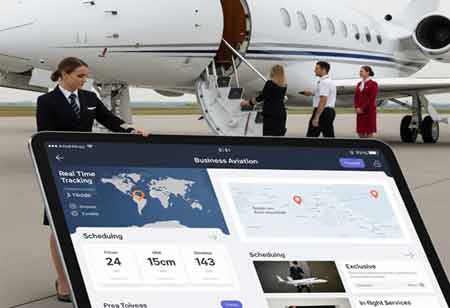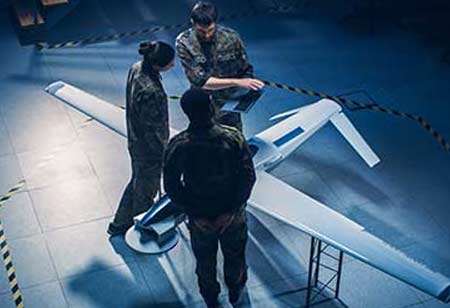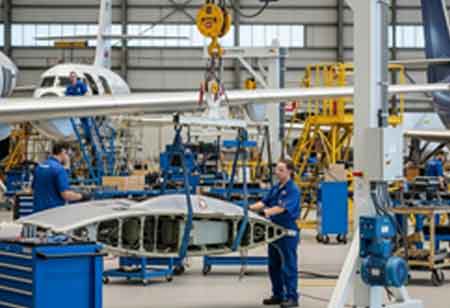Aerospace antenna development enables advanced communication, navigation, and data transmission across modern aviation and space systems. As connectivity becomes a central element in manned and unmanned aerospace operations, the demand for highly efficient, compact, and adaptable antenna solutions continues to grow.
Driven by technological progress and evolving mission requirements, antenna systems are becoming smarter, more integrated, and increasingly capable of withstanding complex operating environments. With a strong focus on performance, innovation, and stakeholder value, the aerospace antenna sector is poised to be a key contributor to the next generation of aerospace capabilities.
Industry Landscape and Evolving Dynamics
The aerospace antenna development landscape has been undergoing a consistent transformation driven by advancements in satellite communication, increasing demand for high-speed data transmission, and the evolution of unmanned aerial systems. A notable trend shaping this industry is the shift toward more compact, lightweight, and multifunctional antennas that meet the stringent requirements of modern aerospace platforms.
As aircraft and spacecraft systems become increasingly connected, the need for highly efficient and integrated antenna solutions grows more pronounced. Integrating phased array antennas and electronically steerable systems into commercial and defense aerospace applications marks a significant move toward enhancing connectivity, performance, and reliability during operations in diverse atmospheric and orbital environments.
The trajectory of aerospace antenna technologies is further defined by the miniaturization of components, the rise of low-earth orbit satellite networks, and the expansion of in-flight connectivity services. There is also a growing emphasis on modularity and interoperability, ensuring antenna systems can quickly adapt or upgrade as mission requirements evolve.
The industry is progressively aligning with global efforts toward sustainability, leading to the development of antennas that support more efficient use of power and materials without compromising performance. These trends collectively illustrate a sector that is constantly pursuing innovation and adaptability.
Addressing Technical and Operational Barriers
Aerospace antenna development faces unique challenges, primarily due to the complex environments in which these systems must operate. One persistent challenge involves achieving optimal performance within the limited space available on aircraft or spacecraft. The solution lies in developing conformal antenna designs and utilising advanced materials, which enable antennas to be seamlessly integrated into the vehicle's surface without compromising aerodynamics or structural integrity.
Another technical obstacle is ensuring signal reliability amid high-speed movement and atmospheric disturbances. To address this, engineers are leveraging adaptive beamforming and electronically steerable array technologies that dynamically adjust antenna orientation to maintain stable connections. These solutions enhance signal quality, reduce latency, and improve bandwidth utilization.
Thermal management is also crucial, particularly in high-altitude or space applications, where temperature extremes can significantly impact the function of components. Solutions such as thermal-resistant composite materials and built-in cooling mechanisms help maintain operational stability, extending the lifespan and reliability of the antenna systems. Electromagnetic interference poses a significant threat to the clarity of communication. Innovative shielding techniques and frequency-selective surfaces are increasingly incorporated to mitigate EMI and ensure consistent data transmission.
Aligning new antenna technologies with legacy avionics and communication systems often presents compatibility issues regarding system integration. This challenge is being addressed by developing open architecture frameworks that enable seamless interoperability, simplify upgrades, and reduce downtime during system overhauls.
Innovation-Driven Value Creation for Stakeholders
Aerospace antenna development fosters many opportunities and advancements that yield significant value across the stakeholder spectrum, including manufacturers, service providers, regulatory bodies, and end-users. One of the most impactful areas of progress is the enhancement of real-time data transmission capabilities, which support safer and more efficient flight operations. This advancement is particularly beneficial in remote sensing, surveillance, and navigation applications, where timely and accurate data exchange is crucial.
The rise of smart antenna systems and the integration of artificial intelligence offer stakeholders improved performance through self-optimisation and predictive maintenance. These intelligent systems can automatically adjust to changing environmental conditions or mission parameters, thereby reducing the need for manual intervention and operational risk. This innovation translates into lower lifecycle costs and higher mission success rates, particularly for long-duration flights or space missions.
Additive manufacturing techniques, such as 3D printing, enable the rapid prototyping and production of custom antenna components. This technological leap accelerates development cycles and reduces material waste and manufacturing costs. For stakeholders, this means quicker market readiness and more competitive offerings.
Advancements in multi-band and wideband antenna technologies enable broader spectrum utilisation, providing more versatile communication platforms. This is particularly relevant for hybrid aerospace systems that require simultaneous connectivity with terrestrial and satellite networks. As a result, stakeholders benefit from more comprehensive and flexible solutions that can support a wide range of operational scenarios.
Expanding collaborative research initiatives and standardization efforts further enhance industry growth, fostering innovation through shared knowledge and consistent benchmarks. This collaborative environment supports the creation of globally compatible solutions that align with regulatory and performance expectations, facilitating broader market access and smoother certification processes.









